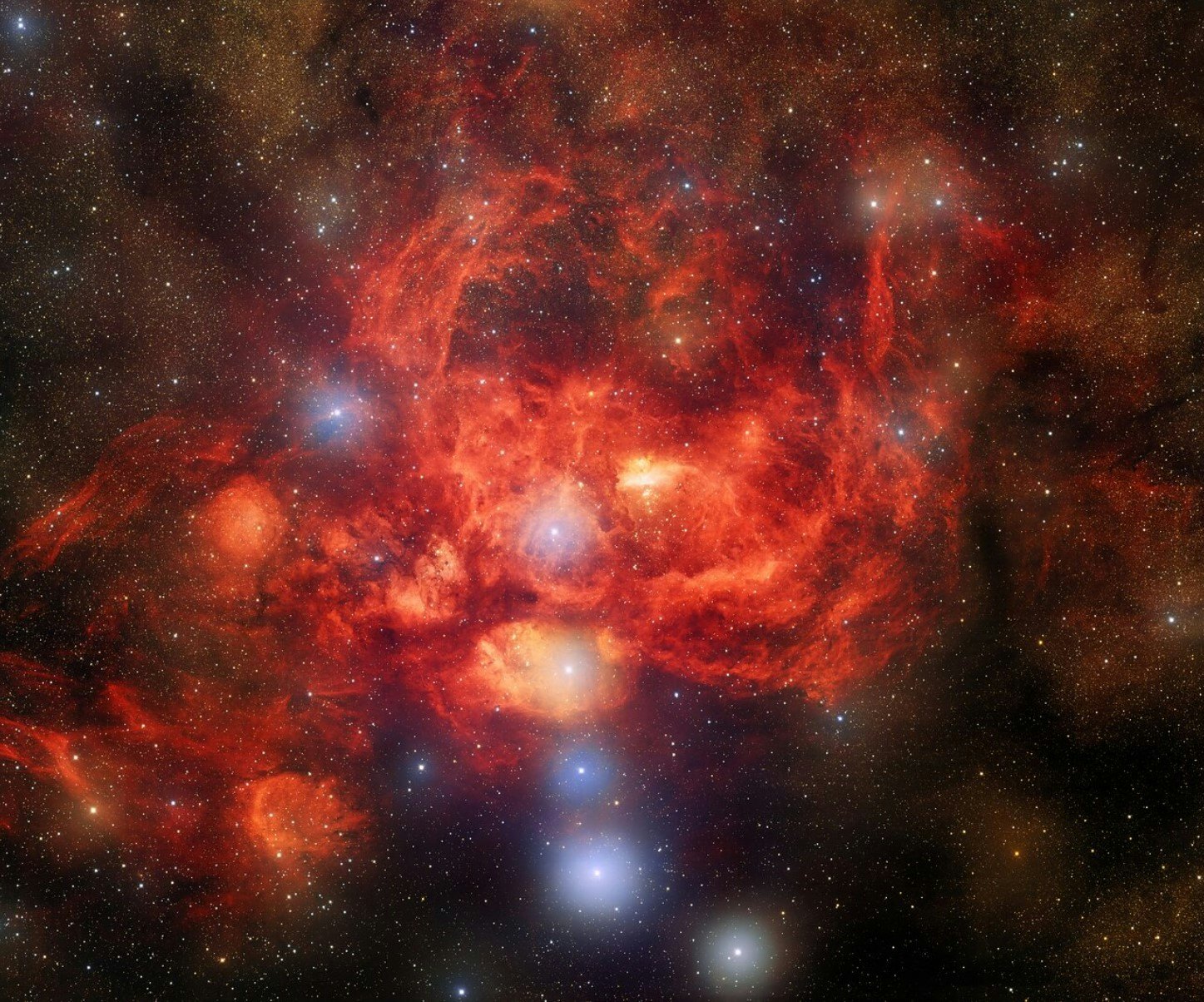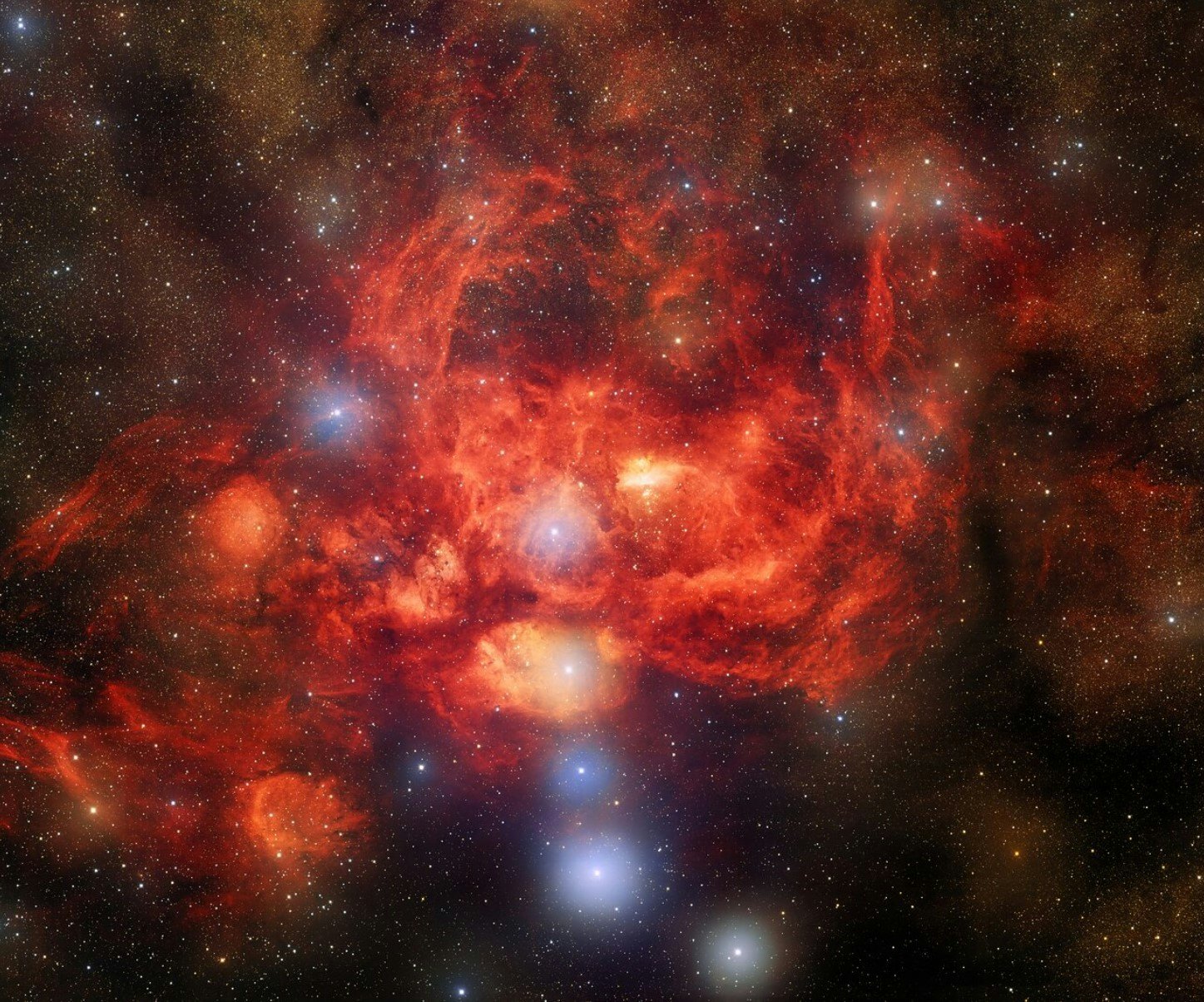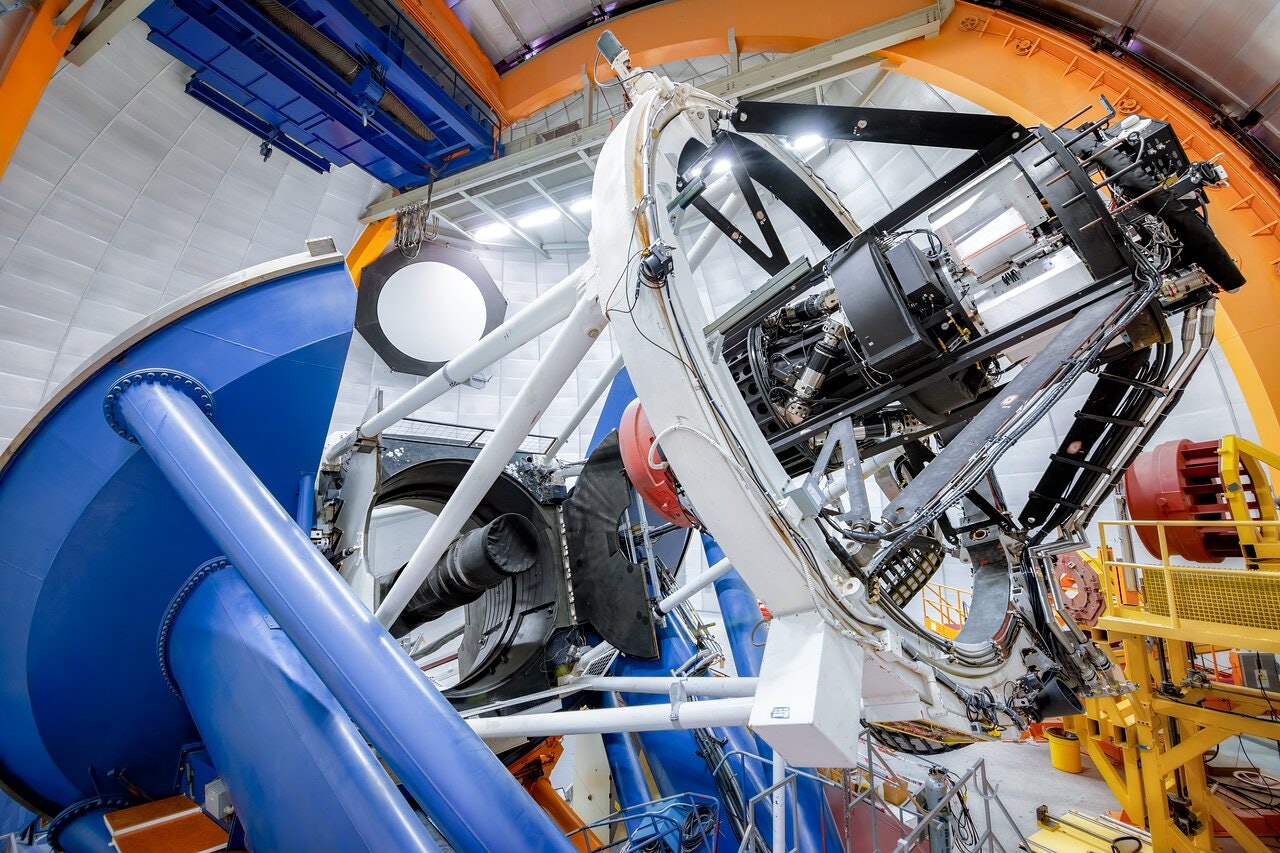
The Lobster Nebula shines in a sea of stars, thanks to a commemorative image from a telescope located nowhere near water.
In fact the Dark Energy Camera (DECam) that took the new fabulous view of this object that the National Science Foundation’s NOIRLab published on Monday, September 12, is mounted on the Víctor M. Blanco 4-meter Telescope at the Cerro Tololo Inter-American Observatory in Chile. It scans the sky atop the arid and mountainous southwestern flank of the Andes Mountains, some 7,200 feet above sea level. (Here’s a Google Map view of the site.)
From this location, DECam has spent the last ten years scanning the sky from the Southern Hemisphere. NOIRLab officials celebrated DECam’s decadal feat with the release of a gorgeous new view of the Lobster Nebula that brims with vibrant colors.

NOIRLab explains in a photo description that each color is a piece of information about what this broad region in space is like. Observed wavelengths of light offered different insights.
“Each observation provides a single-color image, which encompases a specific range of light waves,” the photo description states. “Imaging specialists then take these individual images and assign a corresponding color to each of them. The images can then be stacked on top of one another to create a composite that closely approximates what objects might look like if they were far brighter.”
The sea metaphor continues with the pearl-like points of light in the middle of the image. NOIRLab says they are “bright, young stars surrounded by billowing clouds of dust and gas.”

The Lobster Nebula dwells in the patch of sky occupied by the constellation Scorpius. NOIRLab says the nebula, also called NGC 6357, is located 8,000 miles away. It spans about 400 light years, or roughly 94 times wider than the space between the Sun and its nearest star Proxima Centauri.
So far, astronomers have learned that a few types of phenomena have shaped the cosmic crustacean.
“The twisting braids of dark clouds and complex structures inside the nebula are formed by the tumultuous pressure of interstellar winds, radiation, and powerful magnetic fields,” says the photo description.
NOIRLab is celebrating DECam’s first decade, plus another impressive milestone.
The observatory hub says the instrument has been “delivering on average 400 to 500 images per night.” And DECam has, so far, taken 1 million individual exposures of the night sky.







